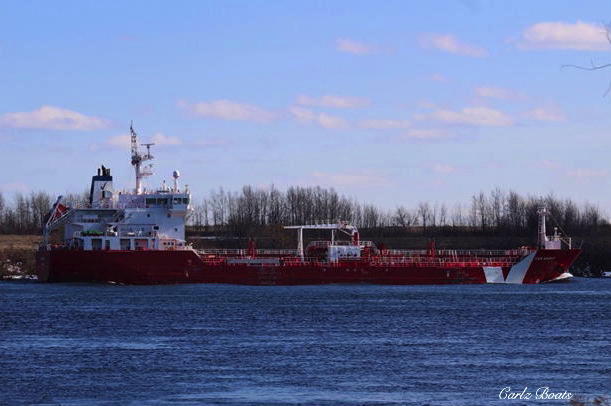 |
| Almost a century old Bridge 19 was built for the 4th Welland Canal in the 1920's |
Regretfully because of COVID -19, I haven't been able to journey up to my hometown, Port Colborne to visit my mother, whose been getting wonderful care at the Portal Village retirement community there, and while in town, get to snap a boat or five passing through Lock 8 which my dad was in charge of as a lockmaster before he retired in 1991, or the bridges he earlier operated, like #21, the first lift bridge at the harbour entrance from Lake Erie and the one to the right, #19, the single leaf bascule or "jacknife" bridge at the north end of the lock taken by my co-worker and good friend, David Cole of Nepean, Ontario on September 20th.
"That darn bridge is up again", - Yeah, if my dad heard it once, he heard it a hundred times, week after week throughout most of his career working on the Welland Canal. It was a common complaint back then and actually quite understandable because there were only two vehicle and pedestrian bridges crossing the often busy Welland Canal in Port Colborne at the time. If you were a student walking to Port High (only rural kids got to go by school bus 🚌, wusses) you were going to be late, 😀YES!! Meanwhile, more often than not, motorists would simply pull a "U-ee"and hightail it to the other bridge about a mile away hoping it was down. If it too was up, they'd simply have no choice but to shut the car off, have a smoke 🚬 (in the car 🚙 then of course) and listen to Danny Neaverth spin some real Rock 'n' Roll 🎶 (now Classic Rock) on WKBW-1520 radio in Buffalo, New York, or some wonderful music to fall asleep by 😴 on our local station 📻, C-HOW-1470 (btw, I spun discs and read the news a couple of times on C-HOW while studying radio at the Columbia School of Broadcasting in Buffalo).
I can still recall the front page photo and article in the Port Colborne section of the Welland Evening Tribune in the late 60's showing how a proposed tunnel like those built in Thorold and eventually Welland would join together Killaly Street East and West which were divided since the digging the fourth Welland Canal in the1920's. Like many things in Port Colborne, the tunnel didn't happen but the second best solution to silence the "raised-bridge-whiners" was the building of another jacknife bridge at the south-end of Lock 8 in the early 80's. Since then, motorists have had a choice to either make their way to closest open bridge, or simply turn off the car and have a smoke 🚬 - in the roadway and away from anyone these day, listen to a music app in the car or 🎧 ear-buds, or simply get out of the car 🚙 to take a pic 📲 or five of the passing vessel like what my friend Dave did for me of a very popular ship on the Great Lakes these days, the 367.5' smart looking tanker IVER BRIGHT.
Built in 2012 at Hyundai Mipo Shipyards at Ulsan, South Korea, the IVER BRIGHT is known as a high-heat asphalt and bitumen tanker which can carry over 6,000 tons of asphalt in her cargo tanks that are heated and capable of maintaining a temperature of 230C (446F) to keep the asphalt in a liquid form. 🆒, actually Hot 😓 Stuff for sure.
The IVER BRIGHT is one of 14 high-heat tankers owned by Iver Ships BV which is a subsidary of Breda, the Netherlands based Vroon BV which which operates and manages approximately 140 deep-sea vessels capable carrying livestock, dry bulk cargo, containers, automobiles, product tankers, high-heat tankers and off-shore support vessels. Each Iver Ships high-heat tanker is red hulled with a huge white "V" near the bow on both side, to acknowledge parent-company 'Vroon" which made the IVER BRIGHT look a lot like a Canadian Coast Guard vessel, according to Dave's wife. Good eye 👀 Anne Cole.
While all other salties rush to get out of the Great Lakes before the St. Lawrence Seaway system closes for winter at the end of December, the Dutch-flagged Arctic Ice Class rated IVER BRIGHT has remained working the upper lakes and rivers for the last two winters while leased by Calgary based Suncor Energy. At their Sarnia refinery, Suncor converts crude oil into many petroleum products including asphalt which is blended to produce material for road building and pothole patching by paving companies throughout the Great Lakes region. However the only way to get the oil by-product to them is by marine transportation which can be a challenge during winter months, first due to the lack of this type of specialized vessel in Canadian fleets, and potential delays if one of the shared Canadian-owned articulated tugs and barges (ATB's) is unable to transit the ice covers lakes and channels even with icebreaker assistance. To prevent reduced production due to these potential delays, Suncor sought to lease a vessel that could solely transport asphalt from their refinery. Unfortunately there aren't a lot of Ice Classed high-heat tankers out there, (only 65 of 263 worldwide) but Iver Ships had 2, and since entering the Great Lakes trade year round, though foreign flagged and crewed, the IVER BRIGHT has done the job and has offered a bright and different look when seen anywhere.
 | |||
 |
| Upbound IVER BRIGHT pushes water over her bulbous above Cardinal on April 4, 2019 |
PS: In case you were wondering too, BV stands for "Besloten Vennootschap" which is Dutch for "Private Company". Also a lot of good information about the IVER BRIGHT on the Vroon and Suncor websites.




No comments:
Post a Comment